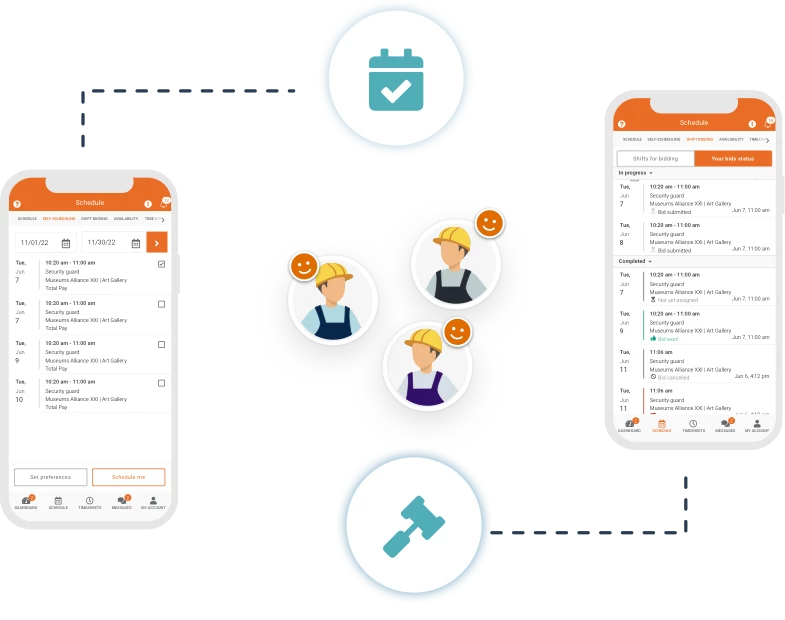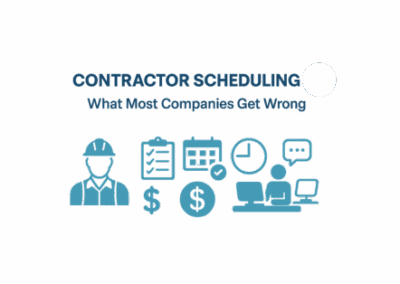Crafting a smart and effective employee schedule is a crucial yet often underestimated aspect of managing a successful business. The process might seem tedious and complex, but it plays a central role in the productivity and satisfaction of your team. In this comprehensive guide, we will walk you through the steps to create an employee schedule.
We want you to understand how important creating an employee schedule is. We also want to break down how to make it work for you and your team.
Understanding the Importance of an Optimized Employee Schedule

First, let’s shed some light on why you should invest time and effort to create an employee schedule that is well-optimized. You might think scheduling is all about ensuring every shift is covered, and but it goes beyond that. The goal should be to create a smooth workflow. Ideally, you’ll create an employee schedule meets your business needs but also keeps your team happy and motivated.
When you consider the unique skills and preferences of your employees while creating a schedule, it shows them you value their input and care about their work-life balance. It lets them know that you’re considering more than just business hours. Such a thought-out schedule can create a positive workplace culture. It can ease stress, prevent burnout, and boost morale.
When employees are happy, they are more likely to be productive. They are also less likely to leave your company. So, a well-planned schedule can also lower your employee turnover rates, saving you time and money spent on hiring and training new employees.
The Consequences of a Poorly Constructed Employee Schedule
On the flip side, a schedule that isn’t well thought out can have negative effects on your business. It can lead to employees feeling overworked, their unique skills not being used effectively, and a high turnover rate. If you create a work schedule that has employees working too many hours without ample rest, or if they are scheduled at inconvenient times without considering their preferences, they are likely to be unhappy. This can lead to low morale and reduced productivity.
Moreover, no-shows or late deliveries due to a poor schedule can harm your business reputation. In some cases, it can even lead to legal issues if your schedule violates labor laws. All of these problems show why it’s so important to create an employee schedule that is fair and efficient.
A Step-by-step Guide to Creating an Effective Employee Schedule
Now that we’ve explored the importance of a good schedule and the consequences of a bad one, let’s dive into the steps you can take to create an employee schedule that will maximize productivity and satisfaction.
1. Understand Your Business Needs
The first step to creating an employee schedule is to understand your business needs. This means you need to know when your business is busiest and when it’s slowest. You also need to know what skills are required for each shift. This will help you figure out when and where you need your employees the most. This simple consideration is the difference for positive workforce management.
2. Get to Know Your Team

Next, you need to know your employees well. Understand their skills and strengths, as well as their weaknesses. It’s also important to know their preferences. Some people might be morning people, who are most productive in the early hours.
Others might be night owls, who do their best work in the evening. The more you know about your employees, the better you can schedule them in a way that matches their productivity patterns and preferences.
3. Distribute Workloads Evenly
Avoid overworking your employees by ensuring the workload is distributed evenly. An overworked employee is not only at risk of burnout but also less likely to be productive. So, make sure each employee has a balanced schedule that doesn’t leave them overwhelmed. It’s also important to remember the number of hours each employee is contracted to work.
4. Consider Flexible Schedules
“75% of employees rank workplace flexibility as their top benefit.“
Consider implementing a flexible schedule if it’s possible for your business. A flexible schedule gives employees some control over their work hours. This can lead to increased job satisfaction and productivity. It’s a great way to show your employees that you respect their time and personal commitments outside work.

5. Use Technology to Your Advantage
The fifth step is to leverage the power of technology. Say goodbye to your Google Sheets schedules! Use employee scheduling software like Celayix.
Scheduling software can automate the scheduling process, making it faster and reducing the risk of errors. It can also provide valuable insights that can help you further optimize your schedule.
With Celayix, for example, you can easily adjust schedules, notify employees of their shifts, and even provide flexible scheduling options such as self-scheduling and shift bidding. It also allows you to create work schedule templates once you’ve found a good balance. In fact, the right software can address steps 1-4 above with minimal effort from the scheduler! This makes the scheduling process smoother for both you and your employees.
More Tips for a Great Employee Schedule
Now that we’ve covered the main steps to creating an employee schedule, let’s look at a few more tips that can help make your schedule even better.
Encourage Employee Input
Encourage your employees to share their input on the schedule. They might have suggestions or preferences that you haven’t considered. Including them in the process can make them feel valued and improve their satisfaction with the schedule. Self-scheduling, shift bidding, and allowing employees to input availability are the easiest ways to achieve this.
Plan for Unexpected Changes
Unexpected changes are a part of every business. An employee might call in sick, or there might be an unexpected rush. Plan for these scenarios in advance to ensure your business continues to run smoothly. With Celayix, you can use the Find Replacement feature that will provide a list of qualified and available replacements for any no-show employees.
Communicate Clearly and Effectively

Communication is key in any aspect of business, and scheduling is no exception. Make sure you communicate the schedule clearly to your employees. Use multiple channels if necessary, such as email, text messages, or a dedicated mobile app like the Celayix employee app.
Embracing the Power of a Well-Crafted Employee Schedule
Creating an employee schedule that maximizes productivity and satisfaction is a balancing act. It requires understanding your business needs, knowing your team well, and managing workloads effectively. It involves flexibility and taking advantage of technological tools like Celayix.
But most importantly, it involves valuing your employees. An optimized schedule shows your team that you appreciate their hard work and respect their personal lives. It contributes to a positive work environment where everyone feels valued.
By putting in the effort to create a well-optimized schedule, you’re investing in your team’s well-being and in the success of your business. It might take some time and effort, but the benefits – from increased productivity to improved employee satisfaction – are well worth it.




